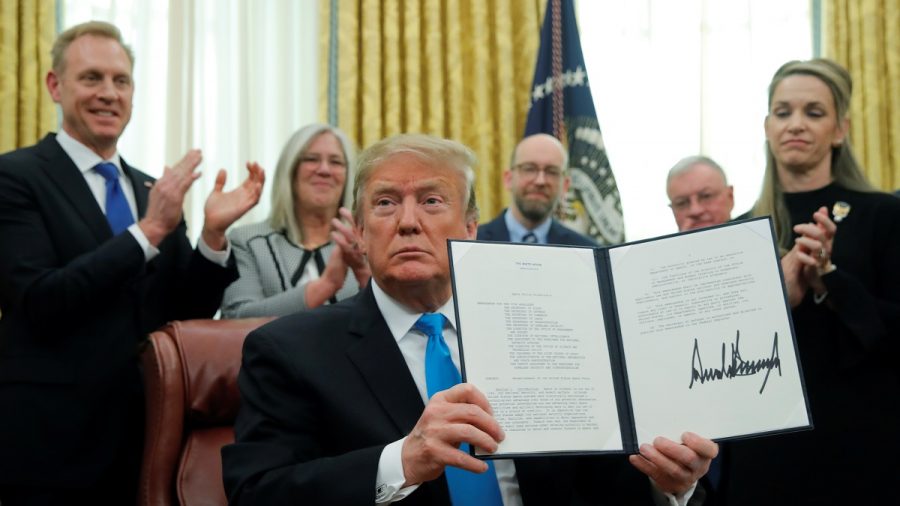WASHINGTON—President Donald Trump took a step on Feb. 19, needed for lawmakers to begin the lengthy process of creating a U.S. Space Force, a new branch of the military dedicated to handling threats in space.Trump signed Space Policy Directive 4, which puts in place the foundation for a legislative initiative that could establish a Space Force as a new military service comparable to the U.S. Marines.
In an oval office signing ceremony, Trump said the Space Force is a national security priority.

The memo directs the Department of Defense “to marshal its space resources to deter and counter threats in space,” through the establishment of Space Force that would be part of the Air Force, according to a draft seen by Reuters.
Establishing the Space Force will require Congressional approval.

In August, the Trump Administration announced an ambitious plan to usher in the force as the sixth branch of the military by 2020.
Space Force would be an armed branch of the military and “include both combat and combat support functions to enable prompt and sustained offensive and defensive space operations,” according to the memo.
Air Force chief General David Goldfein, speaking at Brookings, a Washington think tank, said on Tuesday the establishment of Space Force was still a long way off, including “intricate details of how we move forward in establishing this service within the Department of the Air Force.”
Goldfein also said “from a war-fighting perspective the most important step that we take going forward, and the one that we need to do the quickest, is to establish a U.S. Space Command as a combatant commander,” a role that would actually command the personnel and materials presented to them by Space Force.
Trump signs directive in move to create a U.S. Space Force https://t.co/buCB3wMIBi pic.twitter.com/znvdbeRxMI
— WORLD NEWS (@WORLDNews_1st) February 19, 2019
The Air Force is the U.S. military branch that currently has responsibility for space.
Last year, then Deputy Secretary of Defense Patrick Shanahan had focused on internal Pentagon reform and issues like the creation of a Space Force, an initiative that met with resistance from some lawmakers and others in the Pentagon.
Shanahan, now acting Secretary of Defense, had said in 2018 that the proposed Space Force could have an initial budget of less than $5 billion.
On Tuesday, a Pentagon official speaking on condition of anonymity said initial start up costs for the Space Force were estimated to be about $72 million.
An Air Force cost estimate from earlier last year said Space force would be around $13 billion in the first five years.

By Mike Stone And Jeff Mason


